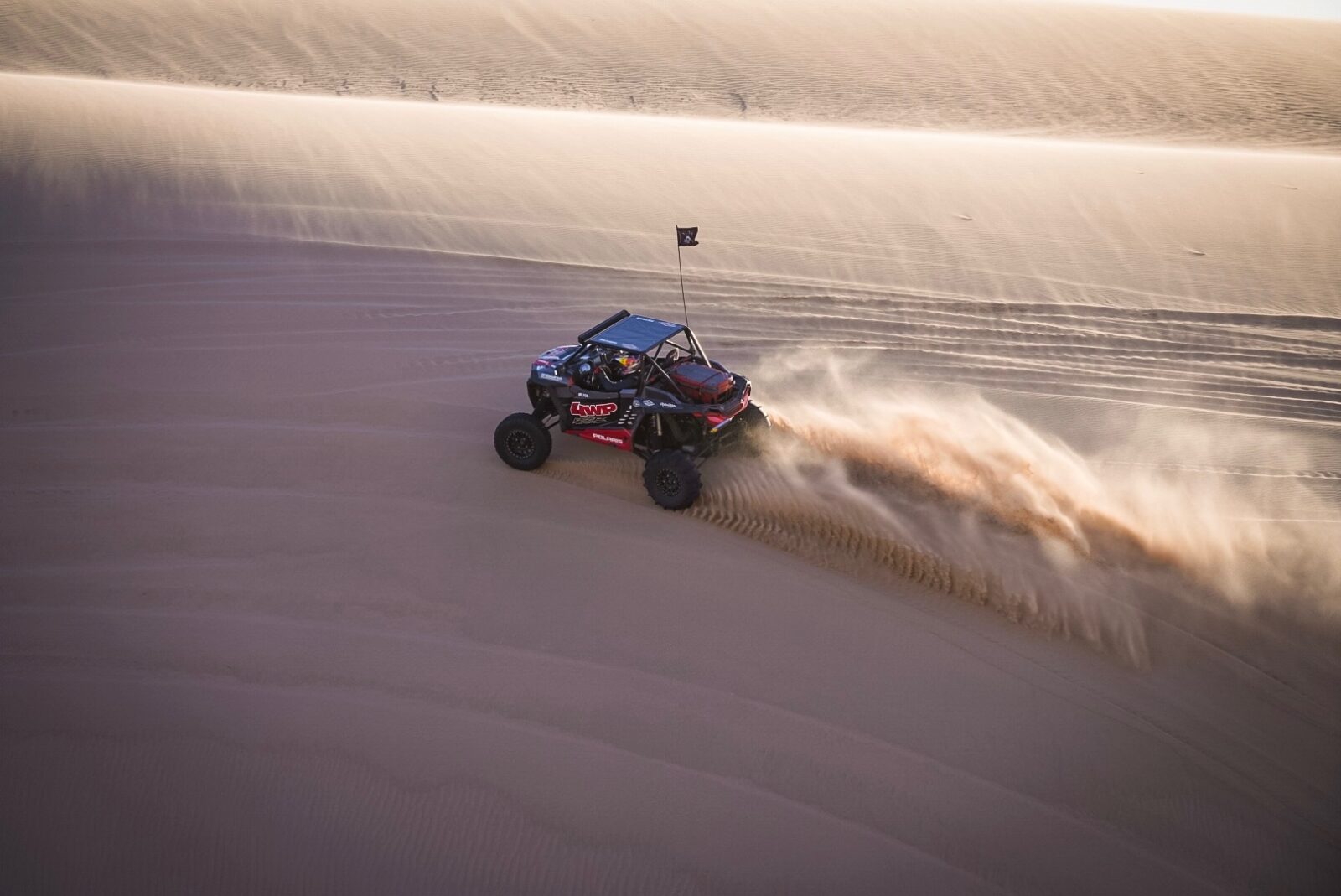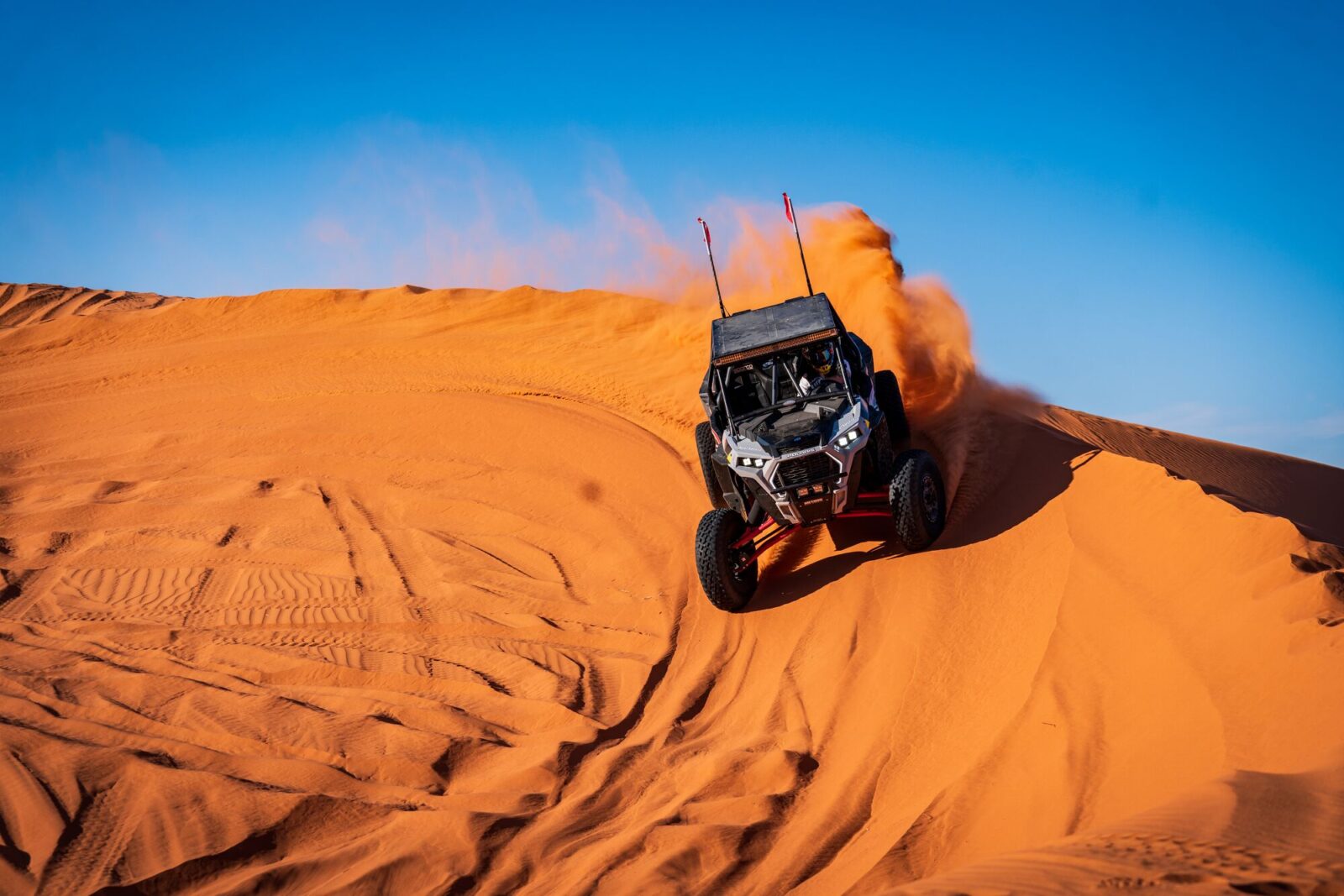Glamis Sand Dunes: Everything You Need to Know Before You Go
The Glamis Sand Dunes, located in southeastern California, is one of the premier off-road recreational vehicle destinations in the United States. The expansive Glamis Dunes stretch for roughly 40 miles at an average width of five miles. The area has become a world-renowned off-road recreation destination where drivers can navigate vast rolling sand dunes up to 300 feet high. In the following overview, we’ll provide you with a brief history of the Glamis area, discuss the best times to visit, and provide some helpful suggestions for when you visit—such as places to camp, nearby lodging, and must-see locations in the surrounding region.
Introduction to Glamis Sand Dunes
The Glamis area (also known as the Algodones Dunes) gained notoriety in the 1960s as a hotspot for off-road enthusiasts to drive dune buggies and motorcycles. Glamis became a bucket list destination as more people flocked to the region, attracting off-road enthusiasts from across the globe drawn to the endless expanses of sand dunes that provide adrenaline-pumping adventure and fun in a unique setting.
Geographically, the Glamis Dunes are part of the greater Imperial Sand Dunes Recreation Area, which boasts towering sand formations that create a surreal desert landscape. Glamis is located within the Colorado Desert (part of the more immense Sonoran Desert) between the Chocolate Mountains and the Salton Sea to the west and the Cargo Muchacho Mountains and Indian Pass Wilderness Area to the east. The result is a stunningly picturesque surrounding backdrop for outdoor recreational enthusiasts visiting the area.
The unique blend of natural beauty and recreational opportunities sets the Glamis area apart from other dunes in the U.S. Visitors can partake in various activities, including off-roading, camping, hiking, and sandboarding. The area’s diverse ecosystem supports a range of desert flora and fauna, with many reptiles, birds, and mammals.

Best Time to Visit Glamis Sand Dunes
The unofficial “sand season” in the dunes is October 1 through April 15. According to the BLM, the Glamis region receives an estimated 1.4 million visitors each year, so there are some considerations one should make when planning a visit, such as weather and special events.
The best time to visit Glamis Sand Dunes and experience milder temperatures is during the fall and winter months—from October to March. Spring and early summer can also be pleasant, but keep in mind temperatures can soar to over 100°F in the summer, so plan accordingly to avoid heat-related dangers.
Other things to consider are weekends with special events like Camp RZR or off-road races like the Red Bull Sand Scramble. Holiday weekends, such as Easter, Thanksgiving, and New Year’s, draw large crowds to the dunes, and throughout the year organized group rides draw off-road enthusiasts from across the country. Before you go, consider these peak periods when camping areas fill up and traffic in the dunes is at its heaviest.
Navigating Glamis Sand Dunes
The Glamis dunes are, in many ways, a living, constantly changing geographical feature. As a result of these shifting sands, there are only a few designated trails. Instead, enthusiasts can roam freely, navigating dunes of varying heights and visiting famous locations within the dunes with names like Competition Hill, Oldsmobile Hill, and China Wall. The Glamis dunes vary from beginner-friendly, low-gradient dunes to steep, tall, expert-level climbs. When riding or driving in sand dunes, it’s critical to maintain constant situational awareness. With ATVs, dirt bikes, UTVs, and sand buggies all sharing the same space, other drivers may be coming from any direction at any given moment—especially during crowded days.
Once you’ve set a date to visit Glamis, you can research the area using the onX Offroad App to better understand the terrain. With three distinct 2D viewing modes (Satellite, Hybrid, and Topo), you can quickly zoom in on the area to get a lay of the land. You can note various campground locations, recreation sites, and designated trails. You’ll also have access to user-generated photos, trail difficulty ratings, and current weather. It’s an easy and effective way to plan and familiarize yourself with the Glamis region using the many standard features of the onX Offroad App.
Best Camping Spots Near Glamis Sand Dunes
There are a host of camping areas surrounding the perimeter of the dunes. Most campgrounds in the area offer primitive campsites without hook-ups, so those with an RV or travel trailer need to be self-sustainable. Some of the more popular places to camp include:
- Glamis Flats Campground
- The Pads (1 through 5)
- BLM Imperial Sand Dunes Campground
- Gecko Campground
- Keyhole Campground
- Roadrunner Campground
- The Wash Campgrounds (1 through 23)
- Dune Buggy Flats
- Ogilby Camp Area
Must-See Spots within Glamis Sand Dunes
With the dunes stretching for 40 miles, many opportunities exist for must-see and off-the-beaten-path adventures. Points of interest include historical markers and memorial tribute sites throughout the dunes. There are the legendary dunes where riders and drivers gather to challenge themselves (and one another) to climb the highest and make it to the top fastest. Destinations that make for fun and challenging adventures include:
- Hugh T. Osborne Lookout Park
- Yarnell Firefighters Memorial
- Flag Pole
- Oldsmobile Hill
- Devil’s Bowl
- Sunset Hill
- Windmill Point
- Glamis Swingset
- Umbrella
- China Wall
- The Sand Drags
- The Tiki Hut
For more helpful inside information, consider visiting one of the online communities or forums with dedicated Glamis content. The following sites can be a wealth of information:

Now that you have some background, it’s time to plan your trip to Glamis. One final thing we’d like to point out is that Glamis Dunes are governed by strict regulations for off-road vehicle use. Visitors must have a recreational permit, all drivers and passengers must wear a helmet, and safety flags are required on all vehicles driven in the dunes. Visitors are encouraged to practice responsible trail stewardship to ensure the longevity of this desert playground for generations to come. Learn more about onX Offroad’s commitment to Stewardship at https://www.onxmaps.com/offroad/stewardship